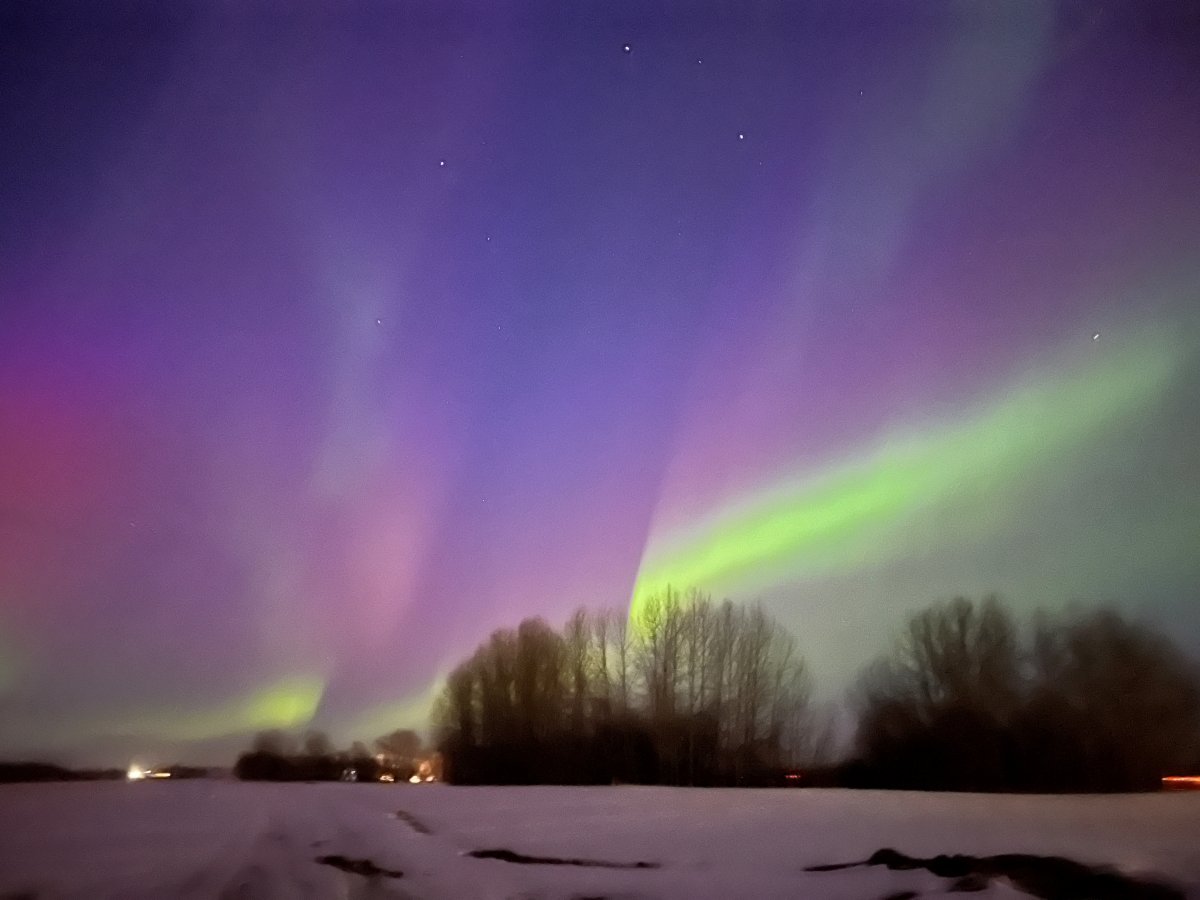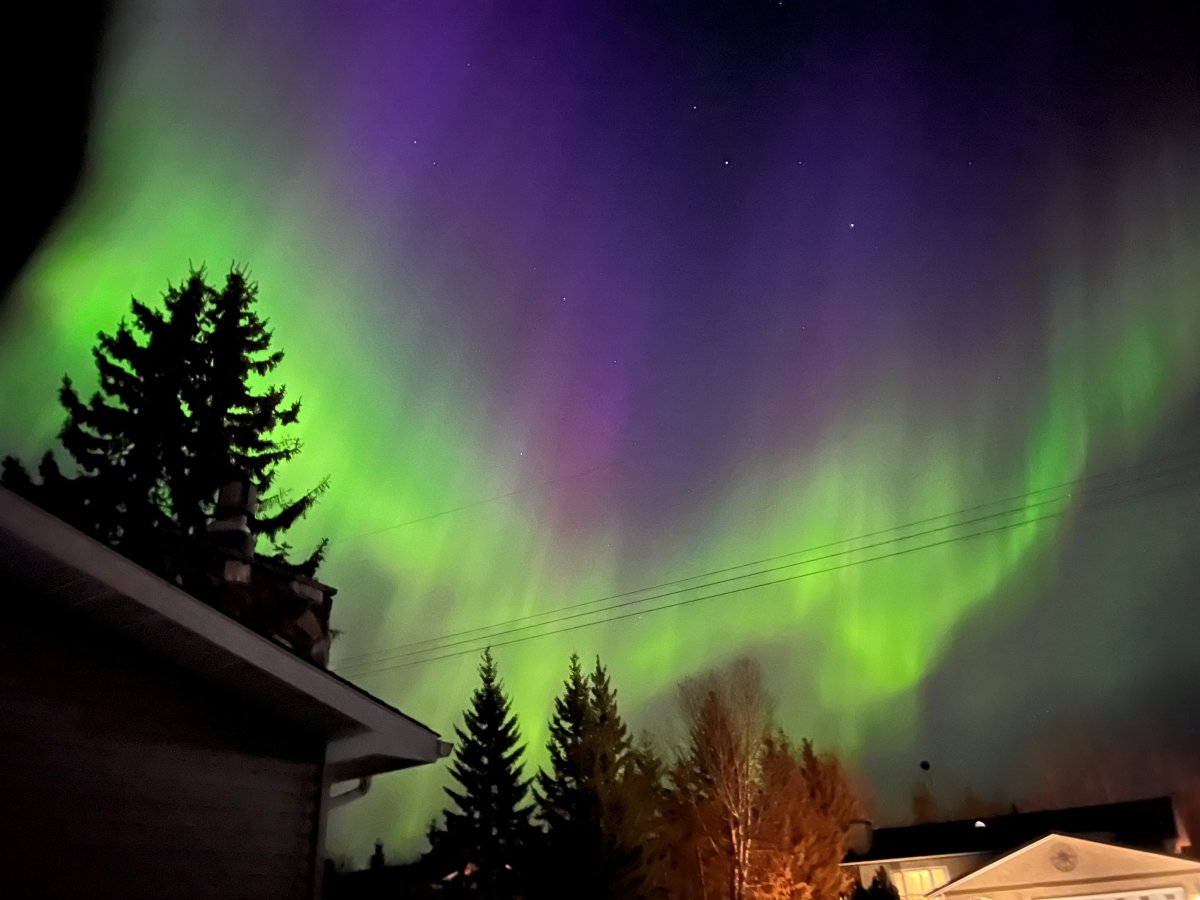People across much of Canada were treated to a dazzling display of purple, pink, teal and green hues overnight Thursday into Friday, as the northern lights danced and shimmered as far as the eye could see.

While most people only ever see the lights from the ground, pilot Matt Melnyk took in the sight from 36,000 feet.
He first spotted the aurora borealis while flying up from Las Vegas to Calgary around 9 p.m. Thursday.
“The aurora was so strong we started seeing it as far south as Idaho Falls! Incredible!” he told Global News.
“Progressively got better and better and better the closer I got to Calgary. It was dancing straight overhead out all the windows of the airplane, it was pretty amazing.”
He then saw more lights a few hours later, when he was flying from Calgary to Abbotsford, B.C., around midnight.
The 20-year pilot and photographer said it’s been years since he took in a sight as vivid as this. He said it never gets old and he feels lucky to see it from cruising altitude.
“Probably the best display I’ve seen in a very long time from the aircraft.”
From B.C. to southern Ontario, people reported seeing the aurora borealis, after a “severe” geomagnetic storm made the northern lights visible quite far south.
Even in Alberta, people as far south as Lethbridge saw the phenomenon.
The lights are created by charged particles that emanate from the sun, move through space and hit the Earth’s atmosphere.
Global News meteorologist Ross Hull said a coronal hole developed in the sun. It’s a cooler, less dense region that can allow solar winds to escape more easily towards earth.
“As they move towards earth, the solar winds interact with our geomagnetic field (which protects our planet from such events) and these geomagnetic events have different intensity levels,” Hull said.
The lights move because the charged particles buckle Earth’s magnetic shield.
Recent solar activity has created the right conditions for the phenomenon to be viewed farther south, and the U.S. National Oceanic and Atmospheric Administration (NOAA) has issued a geomagnetic storm watch for March 23 to March 25.
“We’ve got solar activity that’s increasing. The sun has an 11-year cycle and we’re approaching that 11-year peak of its cycle,” explained Chris Ratzlaff with Alberta Aurora Chasers, a local group that monitors the potential for an aurora.
They analyze data, track solar events, monitor solar wind speeds and then share their findings on social media.
Normally, aurora watchers need to leave the bright lights of the city to properly take in the show, but on Thursday and Friday it was vivid enough to be seen inside Edmonton.
“You definitely don’t get that as often. To have an aurora that strong, we’re probably going to see that a few times a year, where you can see it from within the city,” Ratzlaff said.
Frank Florian, the director of planetarium and space sciences at the Telus World of Science in Edmonton, previously told Global News the weather and temperature on earth do not factor into when northern lights will occur.
The further north a person is, though, the better the chance they will see the lights due to being closer to what’s called the “auroral oval.”
The oval is usually centred around the Earth’s magnetic north and south poles but can expand during periods of intense solar activity.
When the oval expands, the northern lights are visible from more southern points, Florian said. Sometimes after a powerful geomagnetic storm, they can be seen as far south as the United States.
Edmonton-area residents who want to receive a heads up on northern lights can sign up for AuroraWatch email alerts.
AuroraWatch is run by Andy Kale, Ian Mann, Kyle Murphy and David Milling from the University of Alberta’s department of physics.
Their website provides a real-time monitor of geomagnetic activity in the Edmonton area, although it says larger activity can be seen Alberta-wide.
Yellow alerts are issued when there is more than a 50 per cent probability of auroral displays occurring, and red alerts are issued when there is more than a 70 per cent probability.
BELOW: Photos from Thursday night/ Friday morning’s aurora borealis in Alberta.
— with files from Ryan Rocca, Global News










































Comments